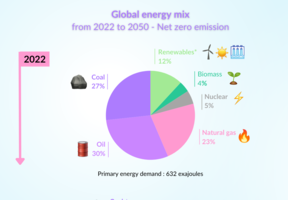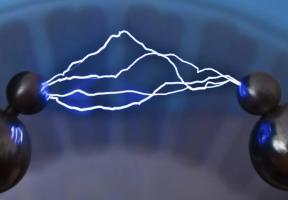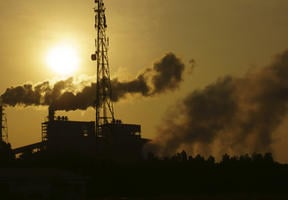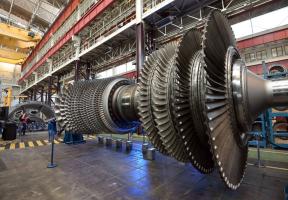Natural Gas Liquefaction
Published on 01.06.20155 min read
By offering a flexible mode of transportation, is poised to play a key role in driving the growth of natural gas in the global . The first step in the process consists of liquefying natural gas by reducing its temperature to -160°C.

© GONZALEZ THIERRY / TOTAL - A gas liquefaction train at the Balhaf plant in Yemen.
Natural gas liquefies when cooled to around -160°C, a temperature that varies slightly according to the properties of the gas. The gas is transported by pipeline from the production site to a nearby plant, where it undergoes several processes :1
Processing: The extracted gas is purified to remove substances such as water and mercury in order to comply with natural gas marketing specifications and prepare for the liquefaction step. Certain substances can corrode or damage the equipment and cause deposits to form during liquefaction at very low temperature.
Cooling: After the initial cooling stage, the gas is distilled to separate out hydrocarbons such as propane and butane, which are liquefied petroleum gases (LPG) that can be used as automotive . The gas is then pumped through several exchangers, where it cools down in stages before liquefying at -160°C. Chilling takes place in a closed loop using one or several fluids as a coolant. The facility is called a . A liquefaction plant can comprise several trains.
Storage: At ambient conditions, liquefied natural gas takes up roughly 600 times less space than in its gaseous state, while retaining the same properties: it is colorless, non-toxic and nonflammable in the absence of oxygen. LNG is stored in large tanks at atmospheric pressure and then loaded onto an .
Liquefaction plants are located as near as possible to production sites. Natural gas produced from reservoirs is often piped back to land, but research has recently been focused on developing floating LNG plants. A number of projects are currently being examined.2 For oil exporting countries with offshore deposits, floating LNG solutions open up new prospects for making challenging offshore deposits commercially viable.

















